Fruits in Panama are one of the best ways to explore the country. Although many of the fruit are exported, there’s nothing like eating them fresh in the market.
Panama is a diverse country filled with cloud forests, highlands and mountains and stretches of hot coastline. It makes for an interesting combination of exotic fruits and vegetables.
One of the most fun bucket lists is to seek out fruits. So I often travel with a list and locals are always so nice to help me find them.
Some of these Panama fruits will be easy to find and others you’ll need to ask around for!
FRUITS IN PANAMA
1. Aguacate / Avocado
Perhaps the most popular Panama fruit in this list is the aguacate or more commonly known as avocado.
This humble fruit is widely grown in tropical countries. And it has become very popular because of its many health benefits.
The fruit itself is egg-shaped and turns dark purple or black when fully ripe. Its flesh becomes almost buttery and very sweet and tart.
It’s often eaten raw and aguacate is also used for different preparations because of its versatility as an ingredient.
It is a popular addition to fruit bowls, smoothies, milkshakes and ice creams.
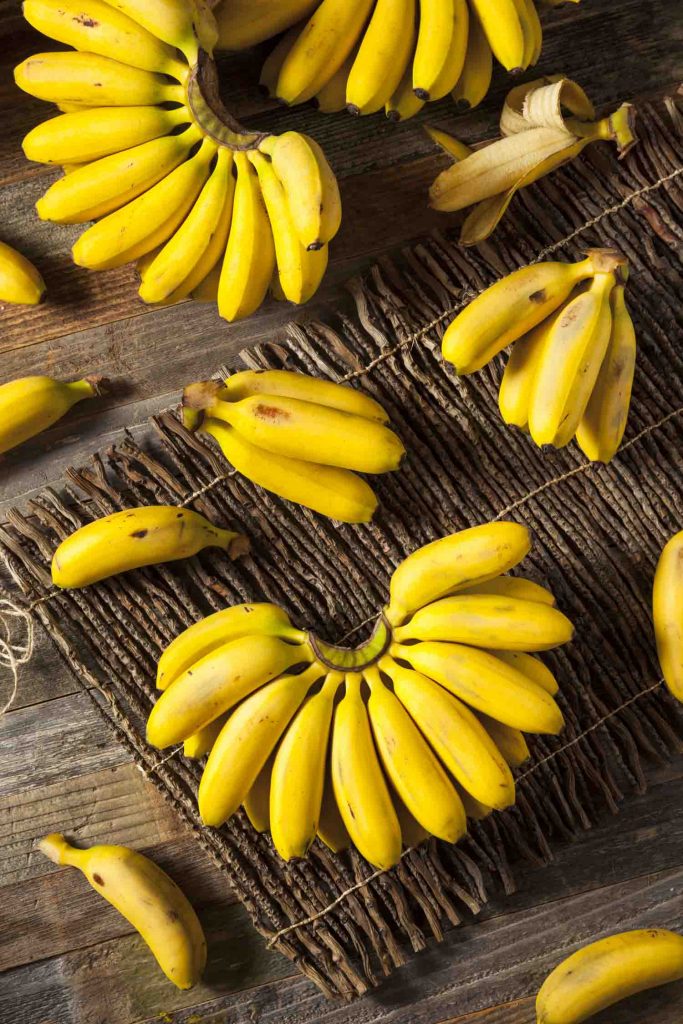
2. Banana
Banana is a highly celebrated fruit in Panama with the country being one of its biggest producers and exporters.
The cavendish or yellow banana is widely cultivated in Panama as well as around the world, you can also find this fruit in Thailand.
It’s also a popular tropical fruit for its soft, sweet and creamy flesh. It’s perfect for a lot of sweet and savory preparations.
Rich in potassium, fiber and vitamins B and C, the banana is commonly eaten raw once fully ripe. However, some locals also love to dry or cook it.
In Panama, you will see banana being added to smoothies, milkshakes, cereals, muffins, puddings and ice creams.
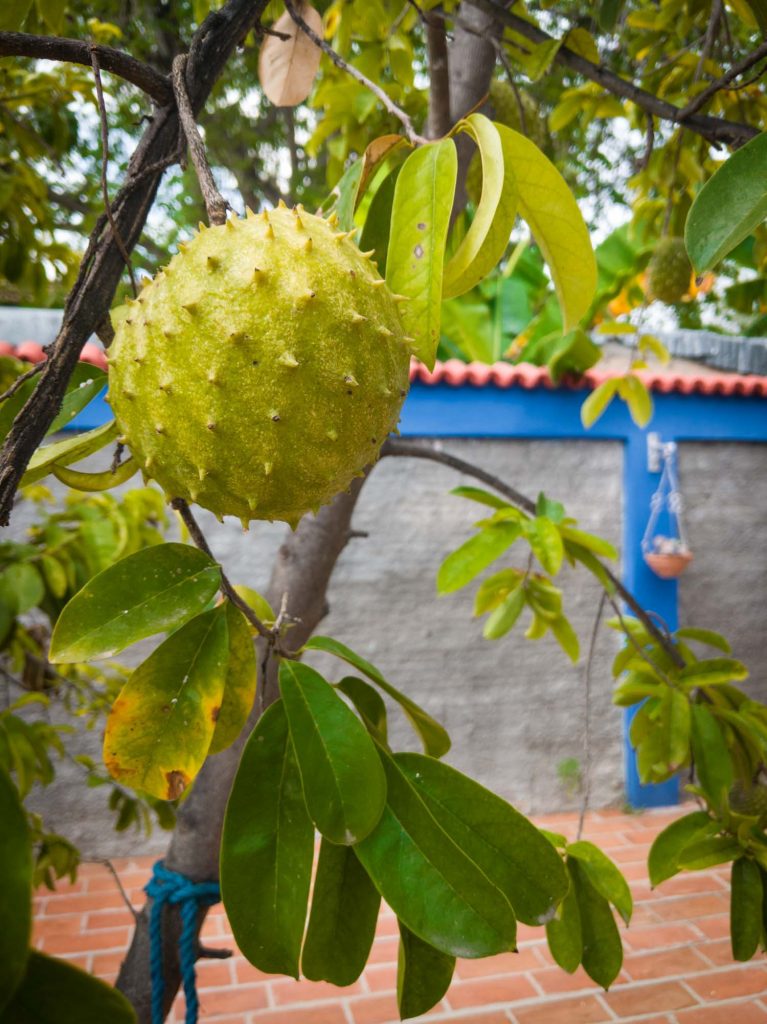
3. Guanabana / Soursop
You can’t be in Panama during the summer and not try this popular Panamanian fruit.
It is my absolute favourite fruit and I first discovered it as a Guatemalan fruit but it’s available throughout Latin America.
The guanabana may look a bit odd on the outside with its rough, green skin that’s filled with spike-like protrusions.
But once you get past that, you’ll be surprised with a white, custard-like flesh. It’s very sweet, especially when fully ripe.
The guanabana also smells like a banana or pineapple, but with a hint of acid. It can also be very fragile and can only last for a few days after being harvested.
Locals usually eat guanabana raw, but you can also use the pulp for juicing or smoothies. Some locals even use this fruit for cocktails, sorbets, ice creams and custards.
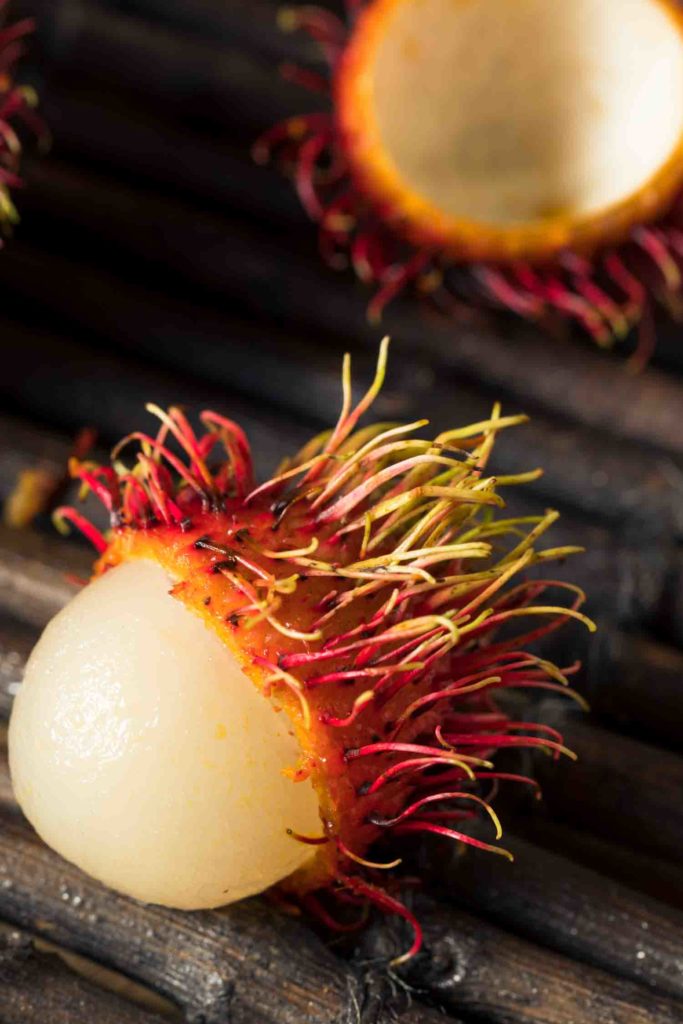
4. Mamon chino / Rambutan
The mamon chino or rambutan is considered the national fruit of Panama. It’s also one of the oddest looking tropical fruits with its red skin and spine-like protrusions called spinterns.
Native to Indonesia and Malaysia. It’s also one of the most popular Filipino fruits and mamon chino eventually made its way to Panama.
You can also find it in the Caribbean and is one of the most popular Jamaican fruits.
It is known as different things around the world but it’s more common than you think.
This Panamanian fruit resembles that of a lychee. It has white, juicy flesh with a huge seed in the middle that’s also edible, but it needs to be cooked.
Aside from being eaten on its own, locals also use mamon chino in jellies, jams, cocktails and syrups.
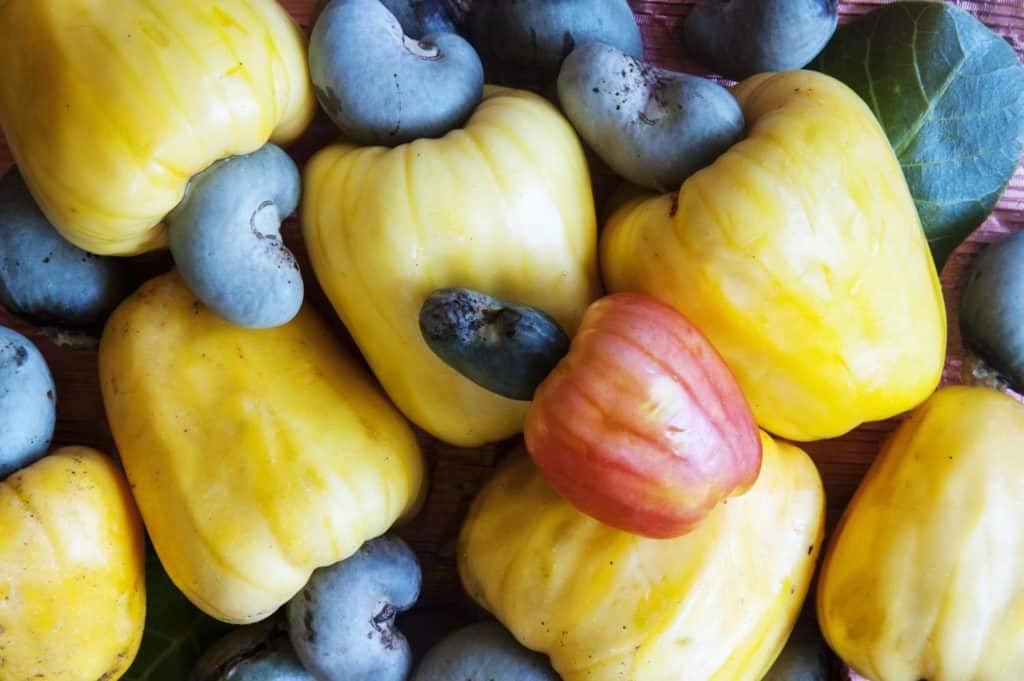
5. Marañon / Cashew Fruit
It’s often thought as one the more exotic Brazilian fruits, but this popular fruit in Panama is available all year round.
Portuguese merchants also brought it to South East Asia and is a very popular fruit in Cambodia.
But what makes marañon unique is that it has its seed outside of the fruit. This may be why the fruit is often discarded or fed to the animals.
The actual fruit is the shell that houses the cashew seed. But the fruit is also sweet and tart that it can be eaten raw or added to desserts.
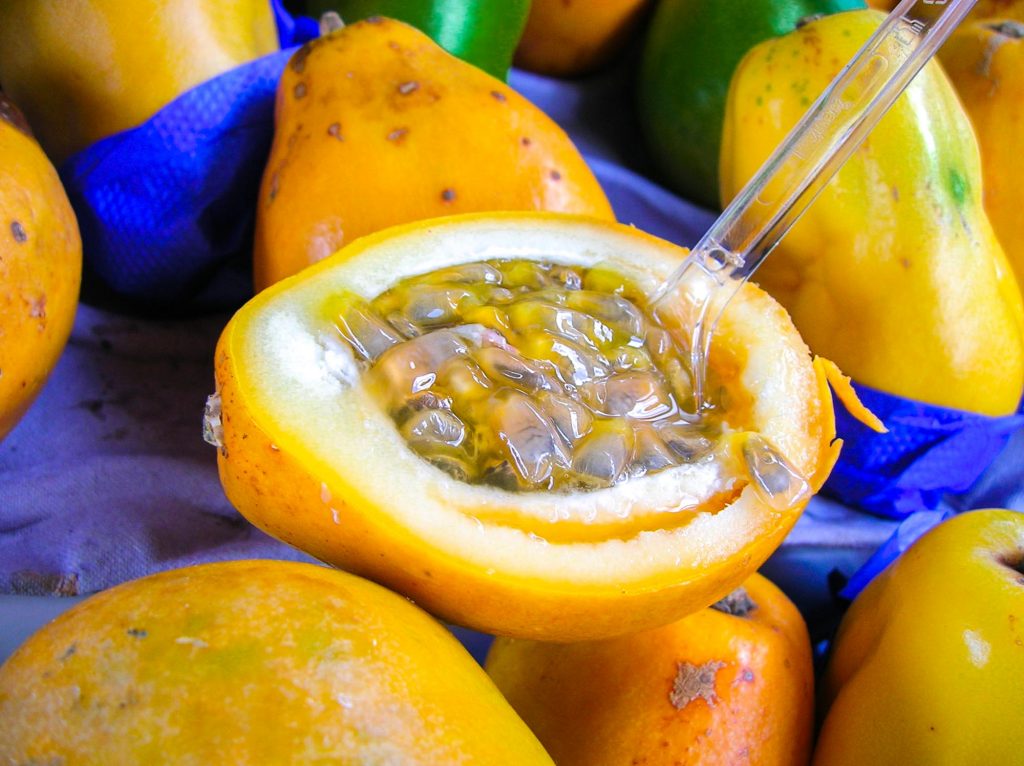
6. Maracuya / Passion Fruit
More popularly known as passion fruit, the maracuya is native to the Amazon forest. Although its yellow variant was believed to have been cultivated in Australia.
The yellow maracuya fruits in Nicaragua are known as calala.
Panamanians have come to love maracuya because of its sweet flavor and jelly-like consistency.
But aside from being eaten on its own, the maracuya can also be added to parfaits, yogurts and salads.
As well, the pulp can be separated from the seeds. It can be used for desserts or turned into jellies and jams.
It’s also common in South East Asia and one of the most popular Vietnam fruits,
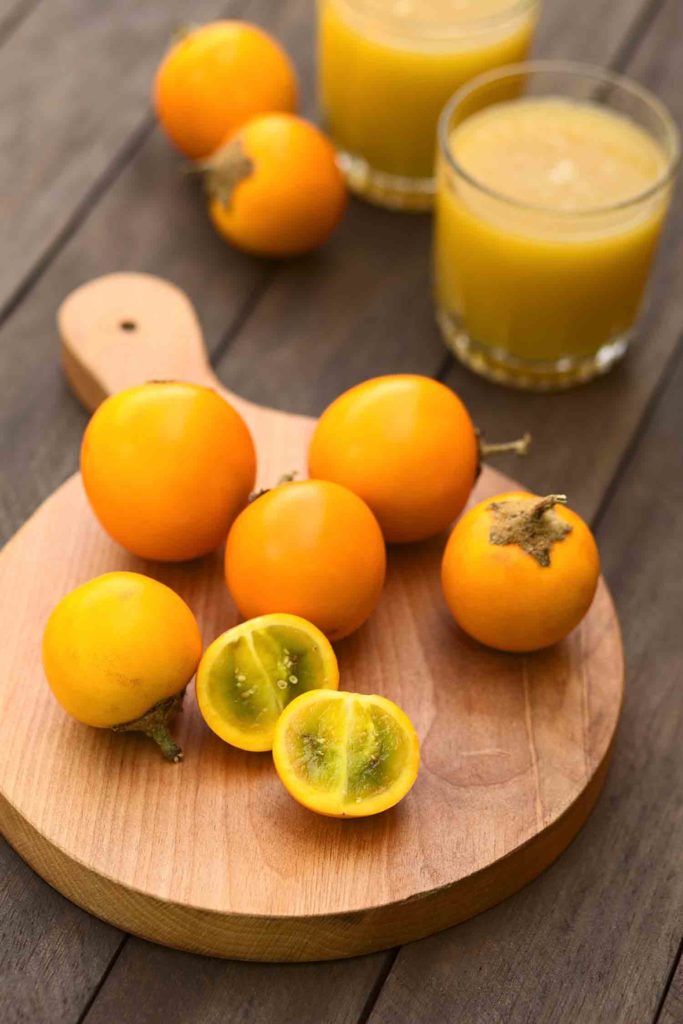
7. Naranjilla
Translating to “little orange,” naranjilla is a fruit in Panama that resembles a small orange. But once you open it, the flesh looks like a small tomato with its custard-like pulp and small seeds.
Naranjilla has a sweet flavor profile with hints of acid. It’s a Colombian fruit too, but called lulo.
Its taste closely resembles a pineapple, citrus or kiwi, and it can be eaten raw when fully ripe.
Naranjilla is also used for juicing and it can be made into jellies, sauces and jams.
Panamanians also remove the pulp and use it as filling for baked goods such as cakes and cupcakes. Some locals even use the pulp in meat stews to add a sweet hint to the savory dish.
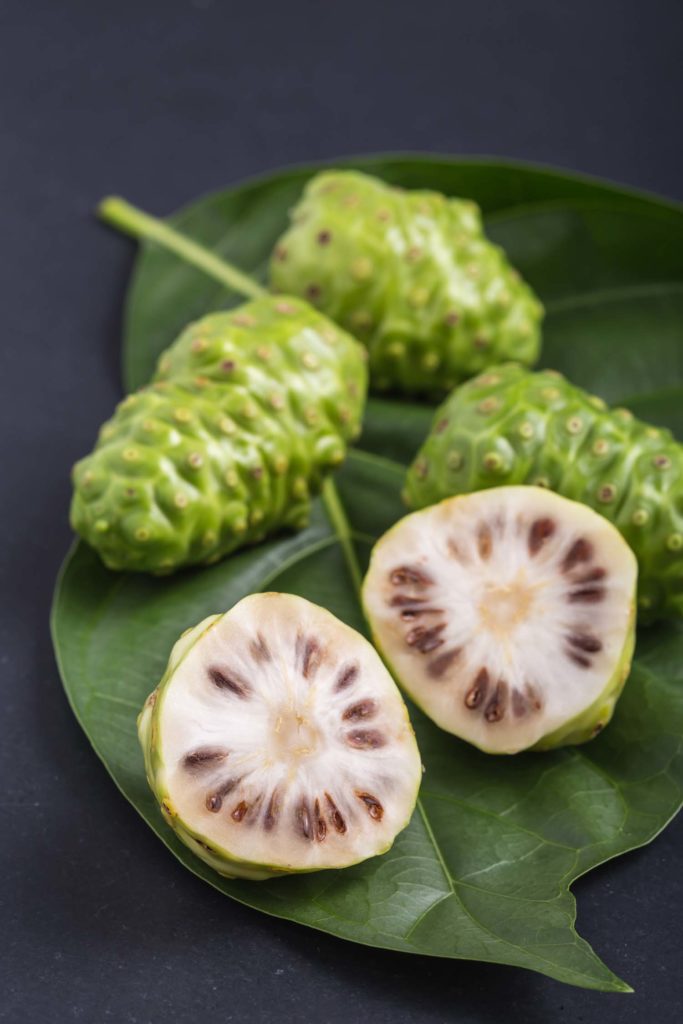
8. Noni
Noni is another popular Panamanian fruit that’s known for its any health benefits. It has rough skin and protrusions, the noni fruit has a white flesh with small seeds inside.
But what makes this fruit really distinguishable is its foul smell. It’s been compared to vomit. It has a bitter flavor, which is why it’s not usually eaten raw.
This is why it’s known as “vomit fruit” or “cheese fruit” because of its smell. Noni fruit is usually made into a juice mixed with other fruits to mask the pungent smell and bitter flavor.
Noni is found is a common Peru fruit, and found throughout South East Asia and Latin America. It’s traveled far and wide and is also a common Hawaii fruit.
The consistent belief no matter where you’ll find noni is that it is a miracle fruit.
It is believed to cure nearly everything allergies to cancer.
The taste itself is often described as stinky feet or blue cheese. This is why it’s often mixed with fruit juice. It’s also now more commonly found in pill or powder format.
9. Papaya
One of the easiest tropical fruits to find in Panama is the papaya. It is available year round and can be bought in fruit stands and grocery stores.
Papayas in Panama are actually bigger and sweeter than your typical papaya. This is why they’re called the “fruit of the angels.”
It’s also a common Cuban fruit, although called fruta de bomba. And you can find it as far away as South East Asia where it’s a common Lao fruit.
This Panama fruit begins with green skin when young and eventually turns bright yellow when fully ripe.
The flesh itself is soft and sweet, which is why you can just slice it and eat it raw. But papaya is also added to different desserts and savory dishes, especially when it’s still not fully ripe.
To be honest, this isn’t a popular opinion but papaya may be the only fruit I dislike.
Depending on where you eat papaya I find the texture can be similar to butter. And sometimes it has a funky flavour like stinky feet or just plain rotten.
If it’s on my plate I always try it. But I rarely eat more than one piece.
10. Piña / Pineapple
Pineapple is the second most exported product by Panama. The first are bananas. This is why you’ll easily see a lot of this unique tropical Panamanian fruit sold by street vendors.
You may think you know what pineapple tastes like. But there are so many kinds of pineapple. And we rarely get to try the most interesting as they may not be exported.
So ask around to see if you can try some varieties. Or visit a pineapple plantation where they have a tasting of all their different kinds. It will blow your mind.
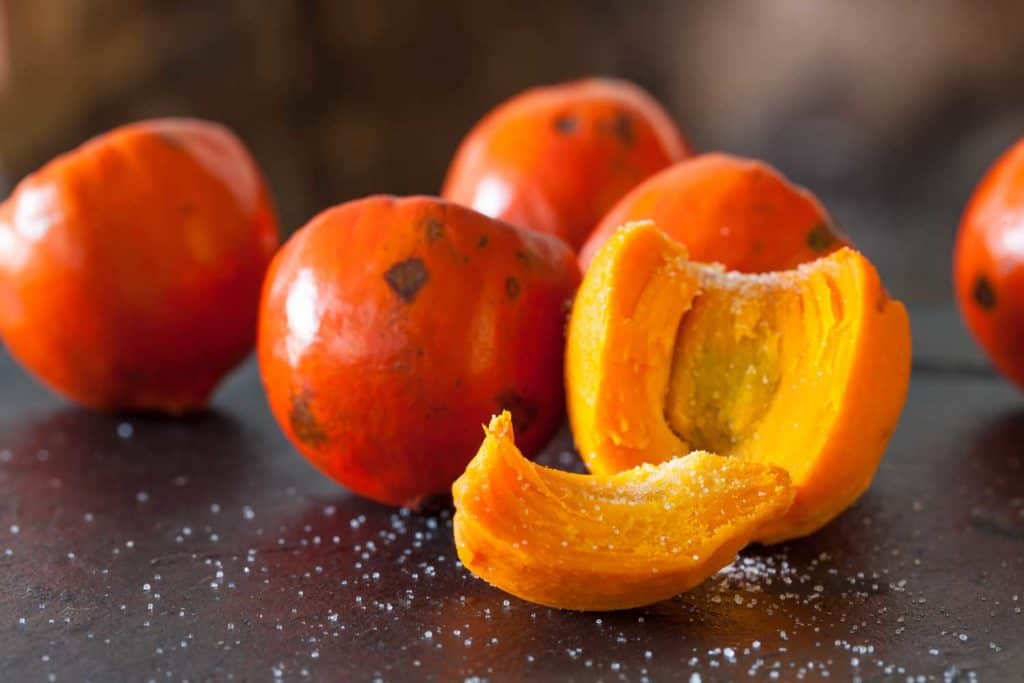
11. Pixbae
Also known as peach palm fruit, pixbae is a truly Panamanian fruit. It’s native to the tropical forests of Central and also known as South America fruits.
From one of the longest living perennial plants, pixbae is a drupe type of fruit with a sweet pulp and a seed inside.
This fruit can either be orange, red or yellow. When fully ripe, depending on the cultivar, you’ll find a lot of it being sold by roadside vendors in Panama.
But unlike most fruits that can be eaten raw, the pixbae fruit needs to be boiled for at least two hours. Otherwise it’s not edible.
With its sweet and earthy taste, it can be turned into jellies, compote or oil. This is why it’s called the “noble Panamanian fruit.”
12. Plantains
If there’s one fruit in Panama that you can easily enjoy no matter what time of the year, it has to be plantains.
With such an abundance of this fruit in the country, you can even ask for patacones or twice deep-fried plantains as a side dish in restaurants.
Plantains are considered a cooking staple for Panamanians. And also used in many healthy Cuban recipes.
They’re usually eaten raw when fully ripe because they have a very distinct sweetness. Or cooked when unripe because of their starchiness that’s like potatoes.
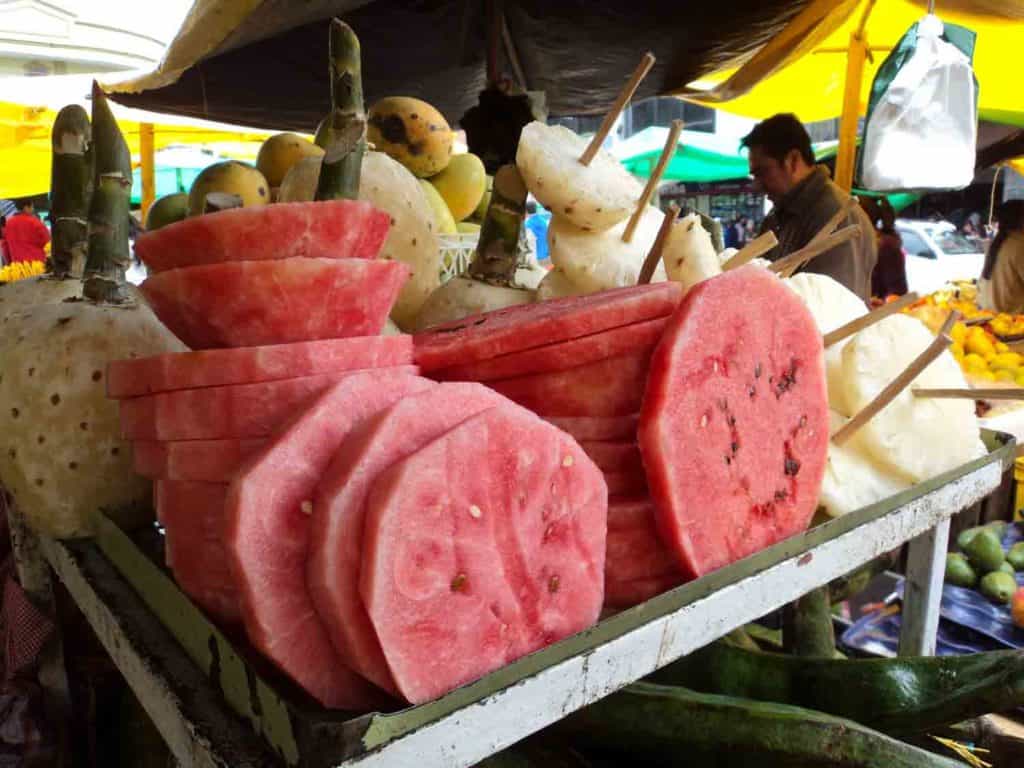
13. Sandia
Panama has a long and colorful history with the sandia or commonly known as watermelon.
In fact, a watermelon riot ensued in Panama City on April 15, 1856 after an American refused to pay for a slice of watermelon that he took from a street vendor.
Today, sandia is widely cultivated in Panama. It has become a favorite Panama fruit by locals and tourists, especially during the summer.
Unlike most fruits, the humble sandia holds a lot of water and has such a refreshing taste that it’s almost always eaten raw.
But sandia is also used in juices, smoothies, sorbets and even ice creams.
You can find it all over the world and is one of the most popular Bali fruits.
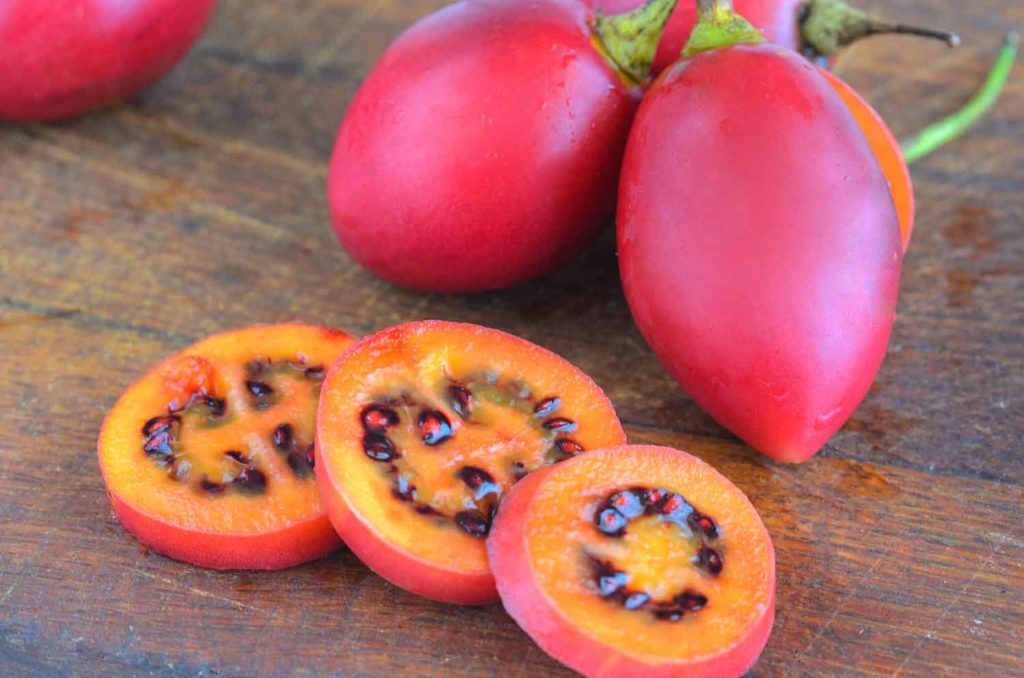
14. Tomate de Arbol / Tree Tomato
Finally, there’s tomate de arbol, a Panamanian fruit that’s widely cultivated by locals because it can be grown in the backyard.
Resembling a tomato, but it’s not a tomato at all. Tomate de arbol and actually grows on a tree.
True to its name, you’ll see an uncanny resemblance to the common tomato. When you open the tomate de arbol, the only difference being the seeds that are larger than the tomato.
This fruit is green when young and turns yellow when fully ripe, which is the sweetest among its varieties.
The red tomate de arbol tends to be more sour than the yellow and orange ones.
Tomate de arbol is used for a lot of preparations in Panama since it is sweet and can be eaten raw. Panamanians love to blend fresh tomate de arbol with sugar and water to make a juice.
One of the most common Ecuador fruits they use it to make an aji, or hot sauce.
It is also turned into a puree to be added to desserts and other dishes.
What fruits in Panama have I missed? Let me know in the comments below!
Pin it: Panama Fruit
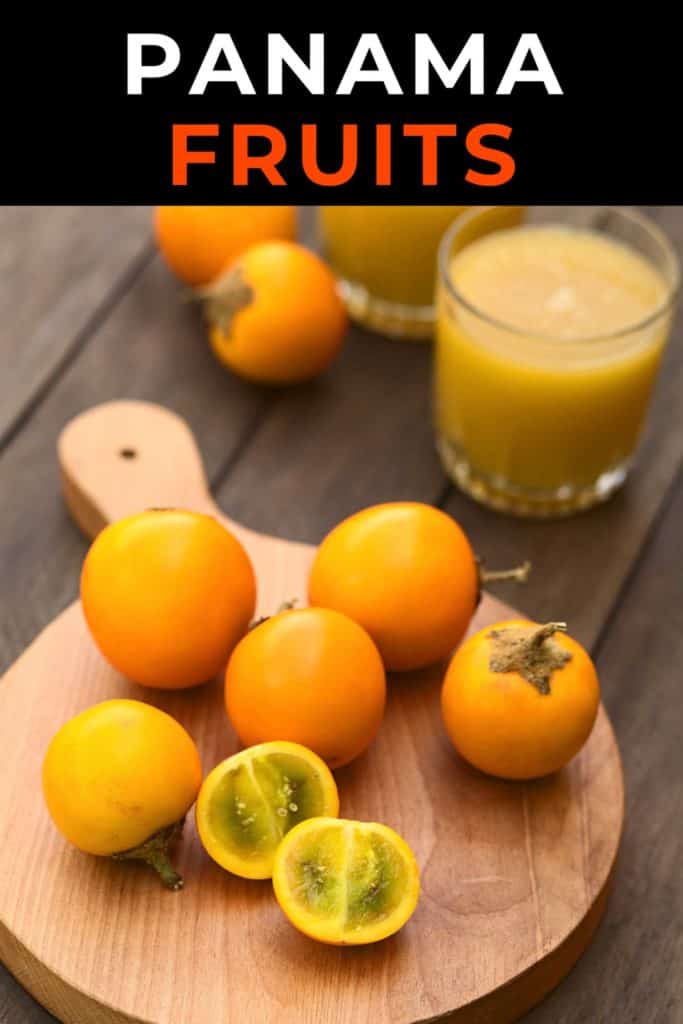
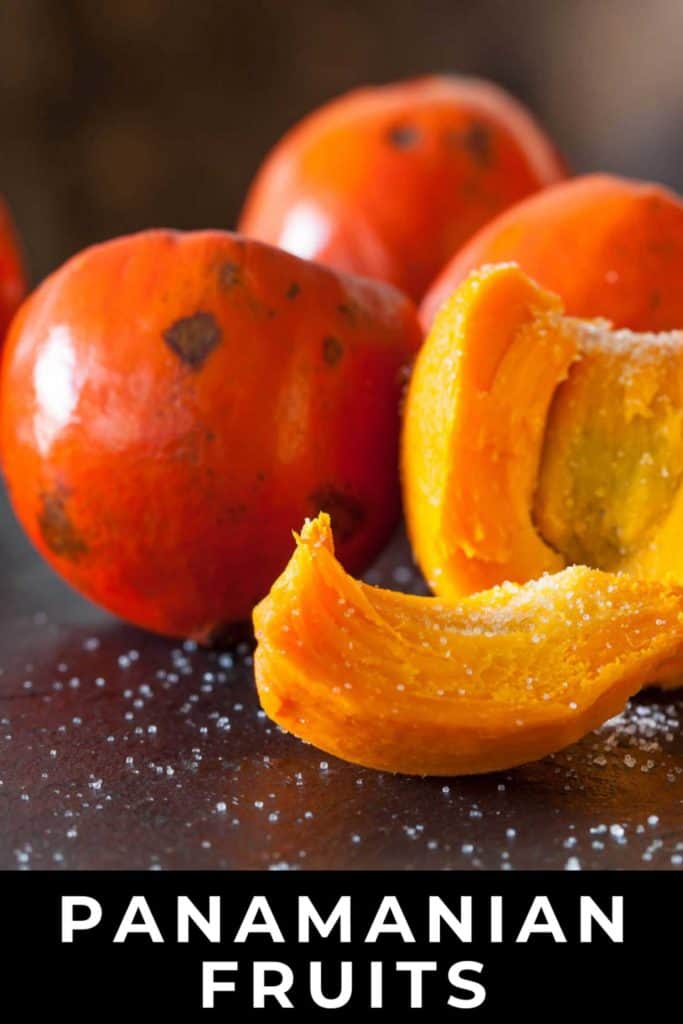
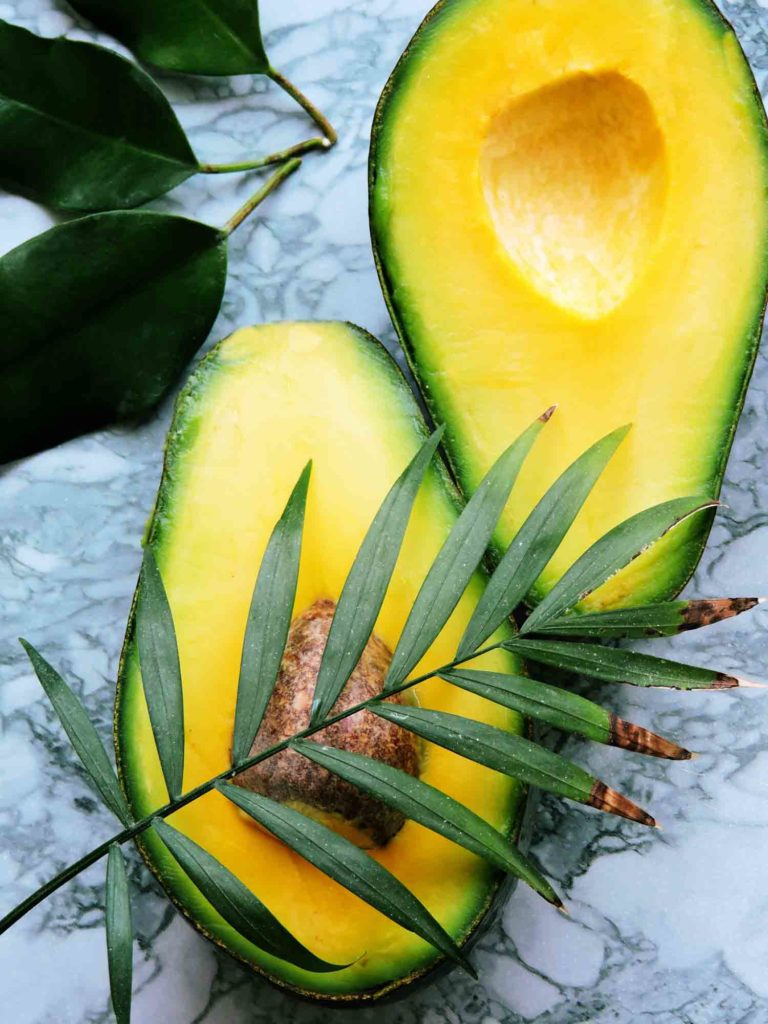
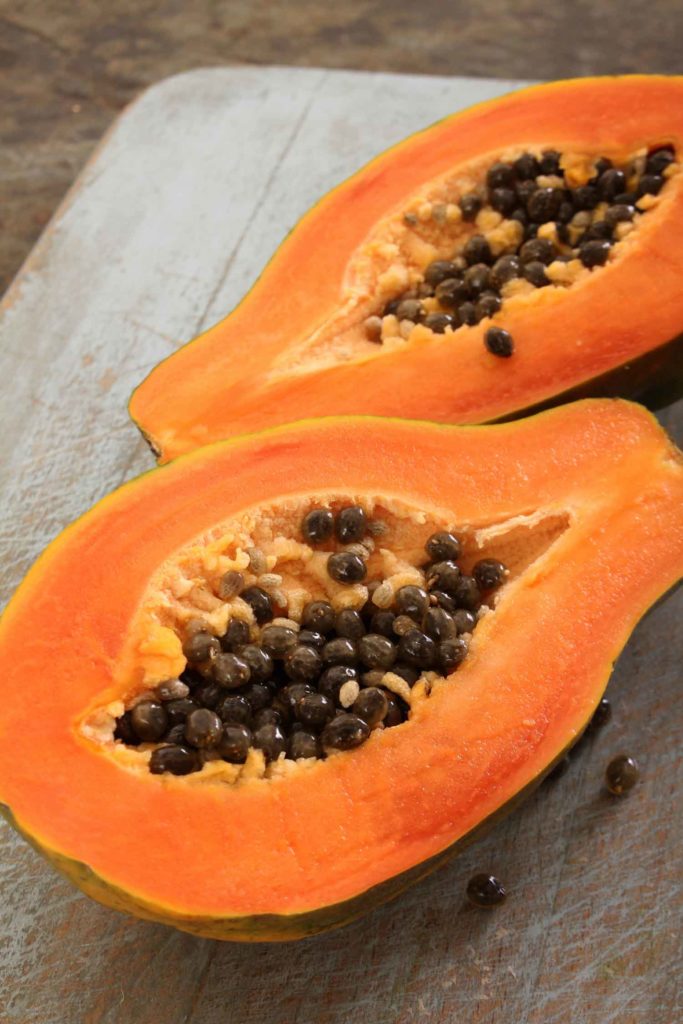
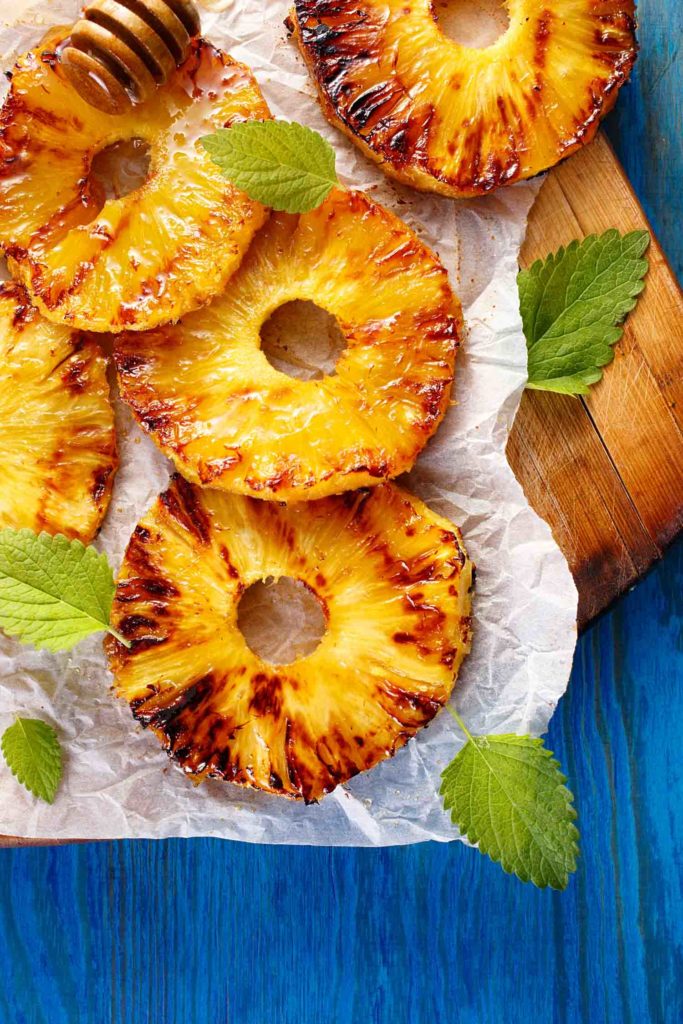
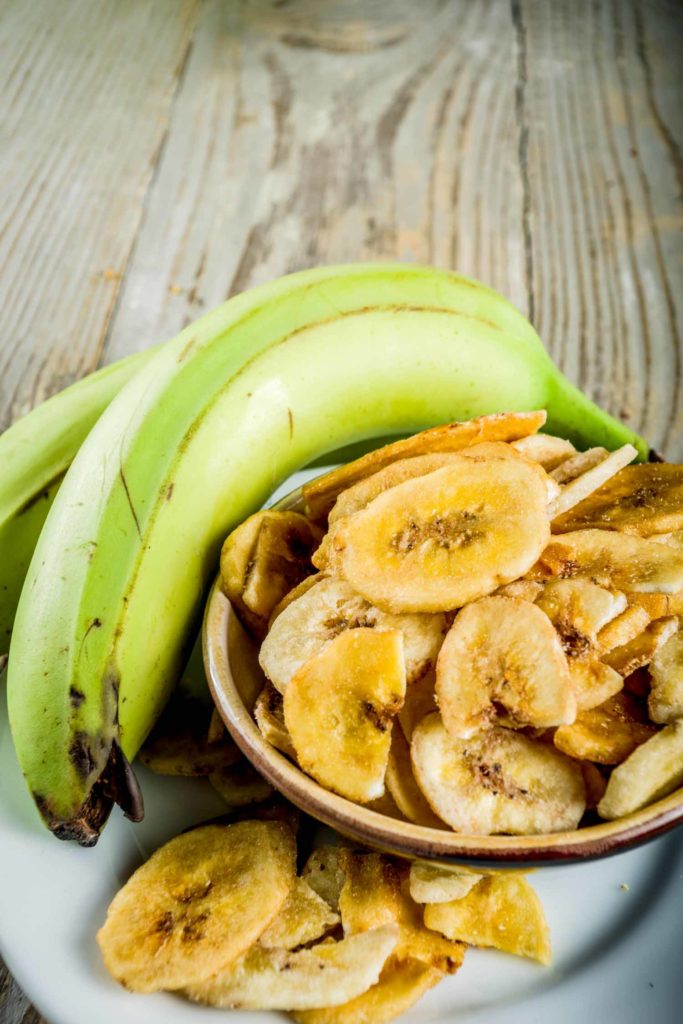
As a Panamanian, I’m very grateful for this article that presents some of the wonderful fruits we grow. With that been said, I find it fascinating that Rambutan is presented as the national fruit of Panama. That honor has always been disputed by the mango and the banana.
I was actually really surprised as well.
I remember also eating caimito, guaba, marañon curazao, pomerrosa, jobo, ciruela, mamey, and nance.
Oh! And also mangotín